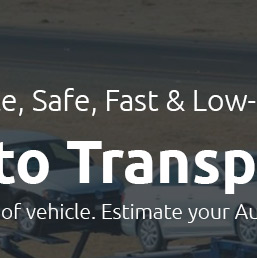 |
|
||||
 |
 |
 |
 |
||
 |
 |
|||||
 |
 |
 |
 |
 |
 |
 |
||
 |
 |
 |
 |
 |
 |
 |
 |
 |
 |
 |
|
 |
Car Transport to Canada: What to ExpectTransporting a car to Canada is a decision that requires careful consideration, planning, and understanding of the processes involved. Whether relocating for work, study, or personal reasons, the journey of moving a vehicle across international borders is multifaceted and can be daunting for the uninitiated. Canada, with its vast landscapes and varied climates, poses unique challenges and opportunities for vehicle owners. Understanding the nuances of this process can significantly ease the transition and ensure that your car arrives safely and efficiently. Firstly, it is crucial to research and select a reputable car transport service. Reliable transport companies are well-versed in the intricacies of cross-border logistics, offering peace of mind through their expertise in customs regulations and documentation. Customs clearance is a pivotal component, as it involves detailed paperwork and adherence to both Canadian and international laws. A seasoned transport company can guide you through this bureaucratic maze, ensuring compliance and avoiding potential fines or delays. Moreover, the financial aspect of car transport should not be overlooked. Costs can vary widely based on factors such as distance, vehicle size, and the chosen mode of transport-be it open or enclosed trailers. While open trailers are more economical, enclosed options provide added protection against the elements, a consideration particularly pertinent given Canada's unpredictable weather patterns. Budgeting appropriately and obtaining multiple quotes can help in making a cost-effective decision.
Once in Canada, there are further steps to integrate your vehicle into the local framework. This includes vehicle registration and compliance with Canadian safety and emissions standards, which may differ from those in your home country. Navigating these post-arrival requirements is crucial to legally and safely operate your vehicle in Canada. In conclusion, while the process of transporting a car to Canada involves numerous steps and considerations, it is entirely manageable with the right preparation and assistance. By choosing a reliable transport service, understanding the financial implications, and preparing for both the journey and the arrival, you can ensure a seamless transition. Being informed and proactive is key to making this experience as smooth and stress-free as possible. Whether you're drawn by Canada's stunning natural beauty, vibrant cities, or economic opportunities, having your car with you can enhance your ability to explore and settle into your new environment. https://www.shiplux.com/blog/what-documents-you-need-to-ship-your-car-between-canada-and-the-us/
Make sure to bring the ITN, car title, the bill of sale, manufacturer's statement of compliance (it should be on the vehicle), and have the EPA ... https://www.reddit.com/r/AutoTransport/comments/k2yicj/shipping_car_from_us_to_canada/
It was somewhat difficult to try and narrow down the list, so I tried the calling the top auto shipping companies which for the most part all ... https://www.canadiancarshipping.com/customs-and-cross-border-car-shipping/
Permanent entry is a requirement for any and all cars that enter Canada's border permanently. Clearance must be obtained before the vehicle crosses between ...
|
